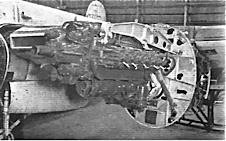cjfield
University of Bath
- Joined
- 21 February 2012
- Messages
- 5
- Reaction score
- 0
Hi everyone, I'm new to the forum and I apologise for immediately submitting a request!
I am undertaking a research project at the University of Bath, to simulate the thermodynamics and performance of the Napier Nomad II E145 Turbo-Compound engine, to help develop a tool which will predict the performance of similar engines, and also to investigate the predicted efficiency and power increases which might be possible with the application of modern materials and components.
I have visited the Napier archive at the IMechE in London and have acquired a number of useful documents, however I am still seeking data on the thermodynamics, pressures losses, temperature limits, intake and exhaust dimensions and anything else which will help me simulate the engine as realistically as possible. Furthermore, I am seeking detailed engineering drawings to help with these measurements, particularly of the intra-engine ducting and exhaust manifold arrangements.
If anyone might be able to help me get hold of this information, I would be very grateful indeed for their assistance!
Many thanks,
Colin
cjfield at gmail dot com
I am undertaking a research project at the University of Bath, to simulate the thermodynamics and performance of the Napier Nomad II E145 Turbo-Compound engine, to help develop a tool which will predict the performance of similar engines, and also to investigate the predicted efficiency and power increases which might be possible with the application of modern materials and components.
I have visited the Napier archive at the IMechE in London and have acquired a number of useful documents, however I am still seeking data on the thermodynamics, pressures losses, temperature limits, intake and exhaust dimensions and anything else which will help me simulate the engine as realistically as possible. Furthermore, I am seeking detailed engineering drawings to help with these measurements, particularly of the intra-engine ducting and exhaust manifold arrangements.
If anyone might be able to help me get hold of this information, I would be very grateful indeed for their assistance!
Many thanks,
Colin
cjfield at gmail dot com


